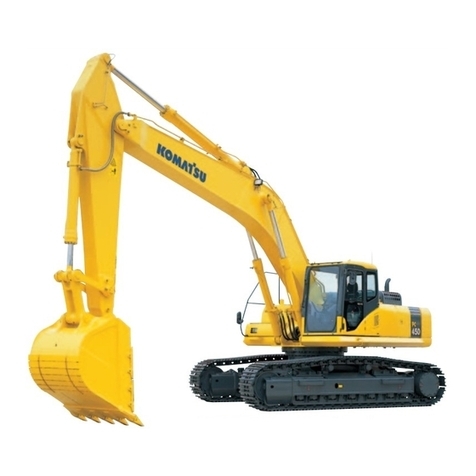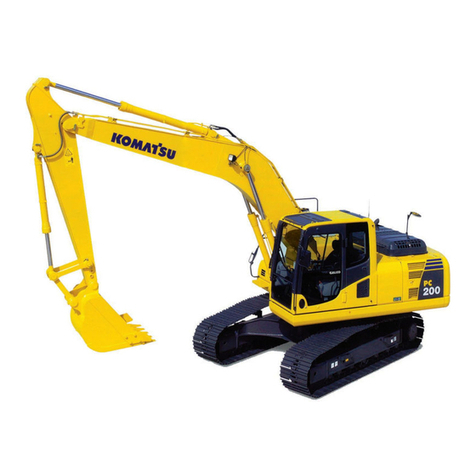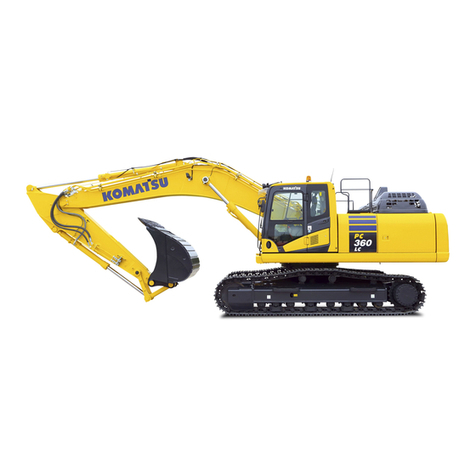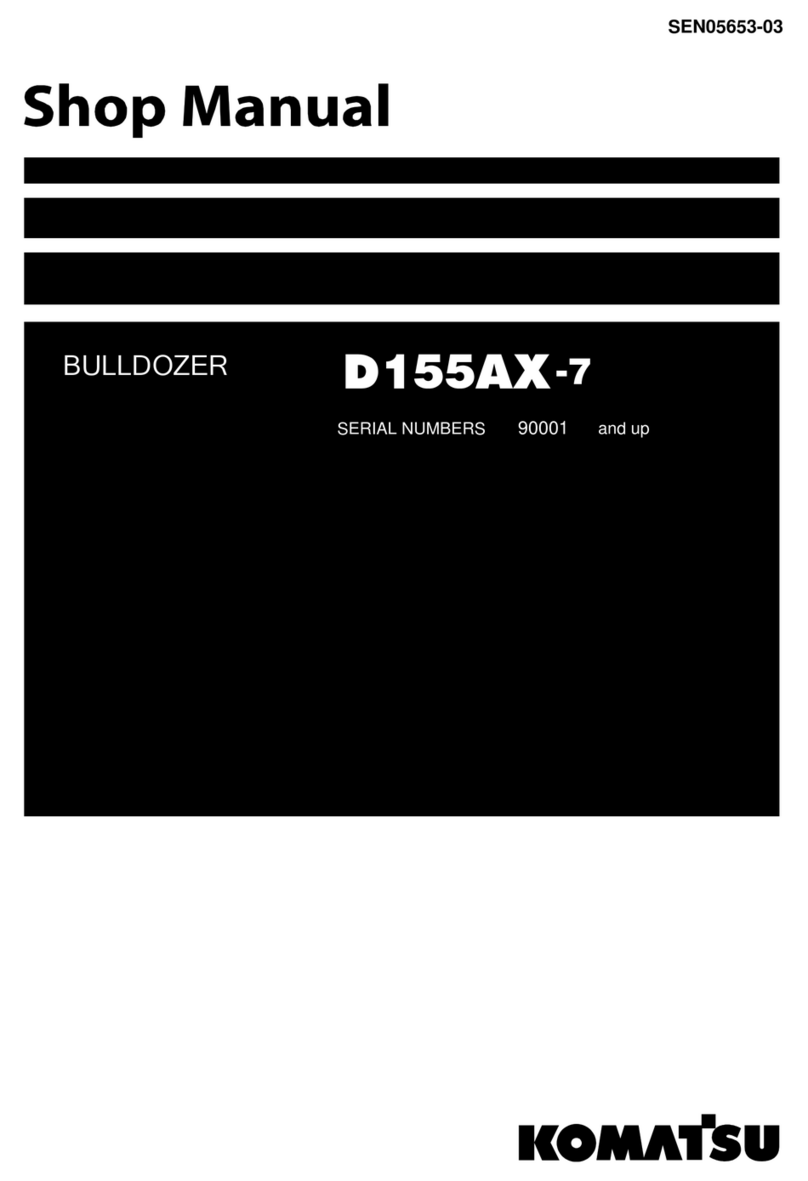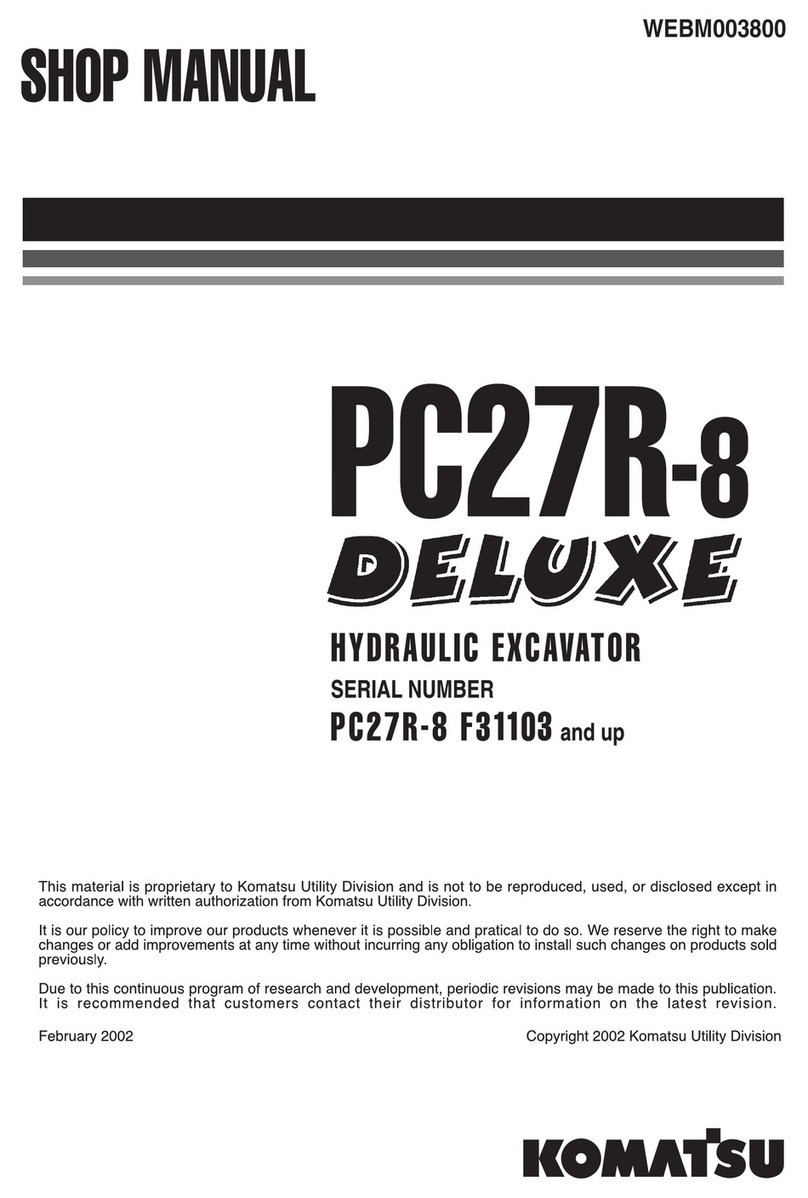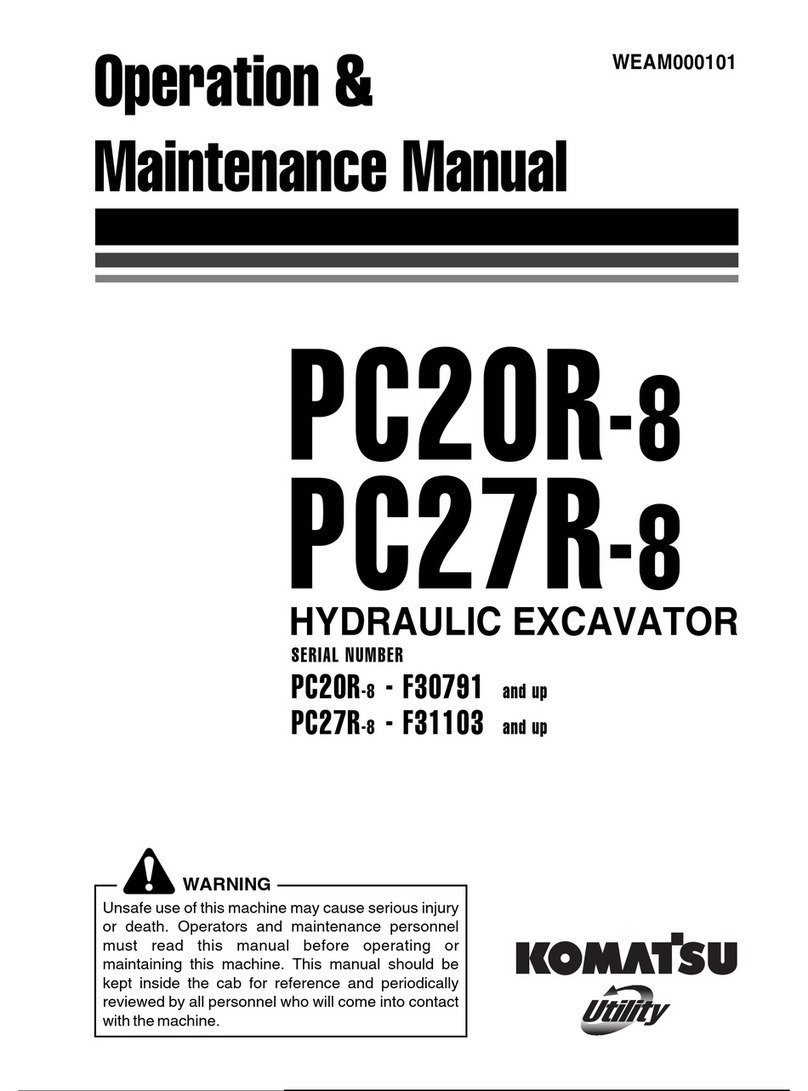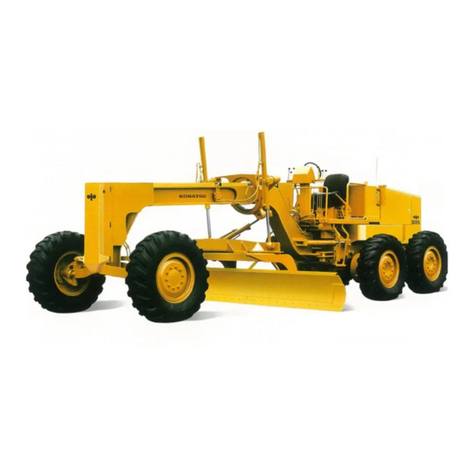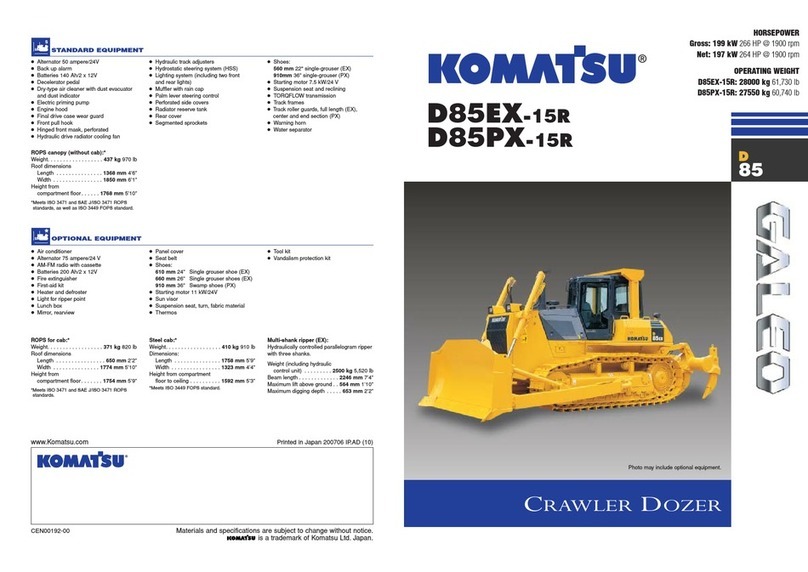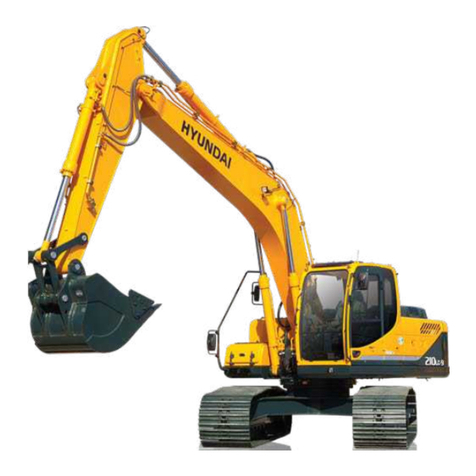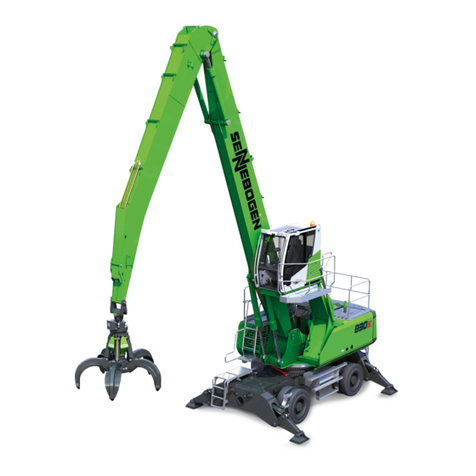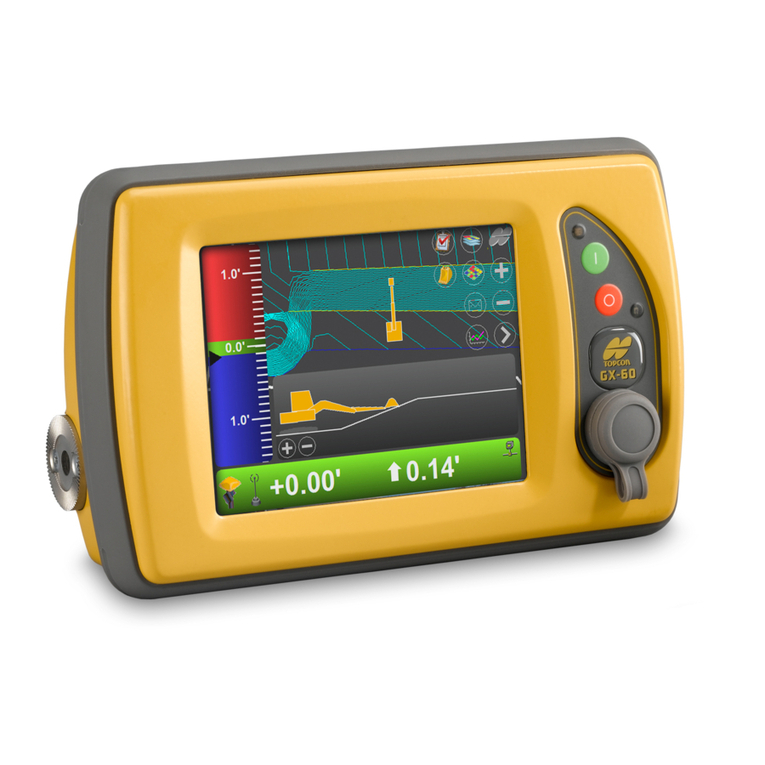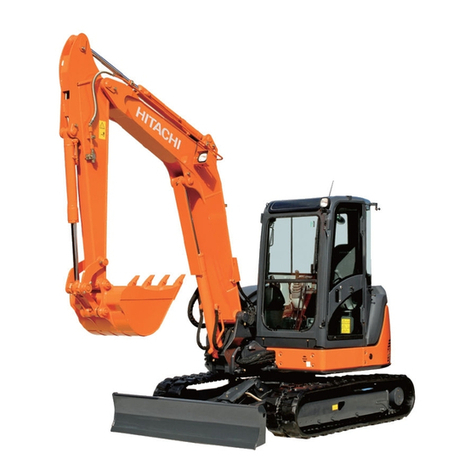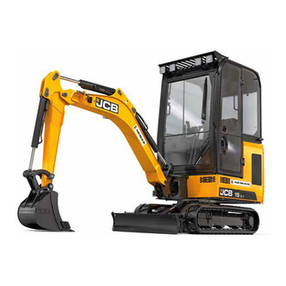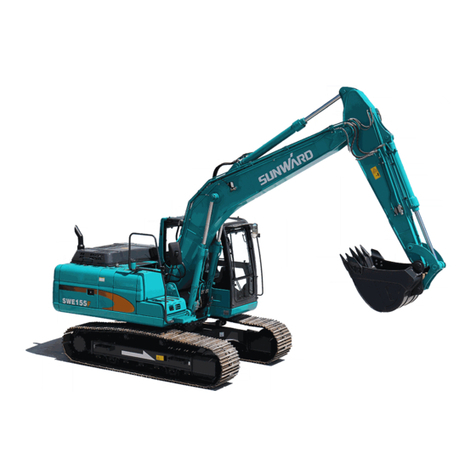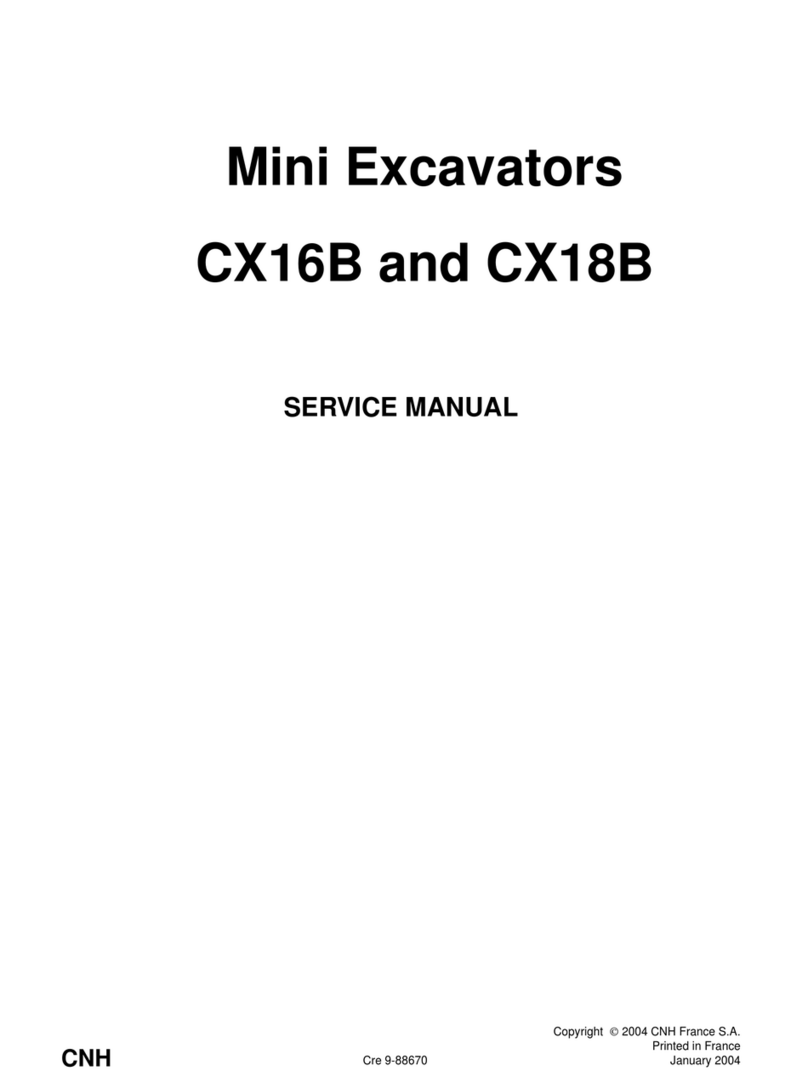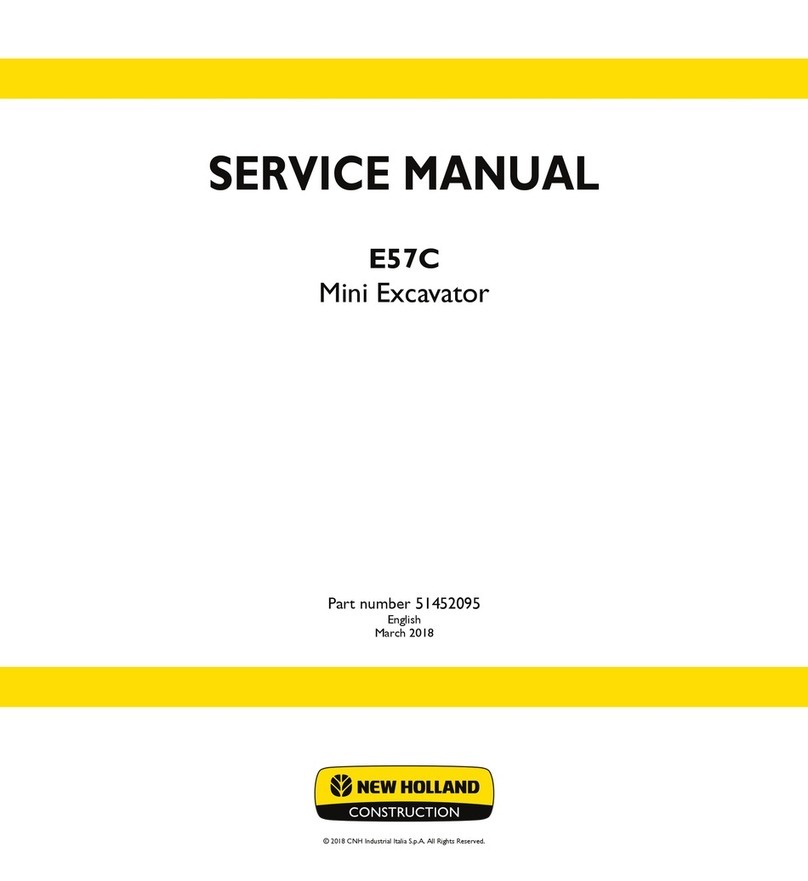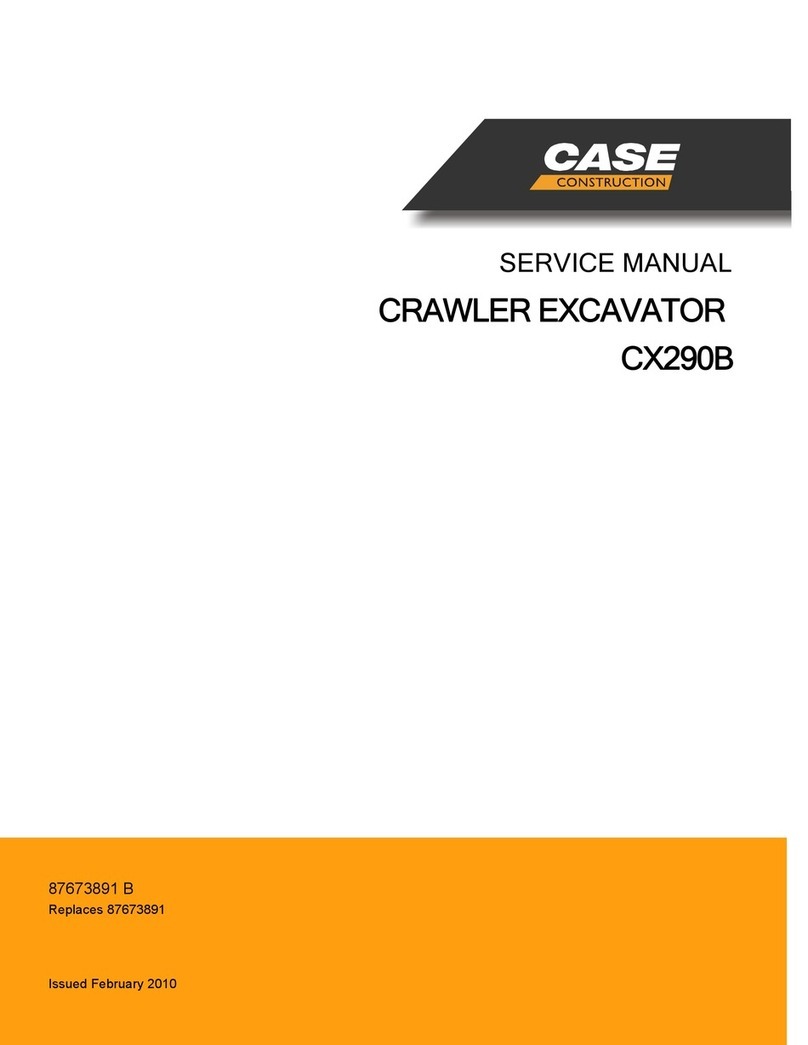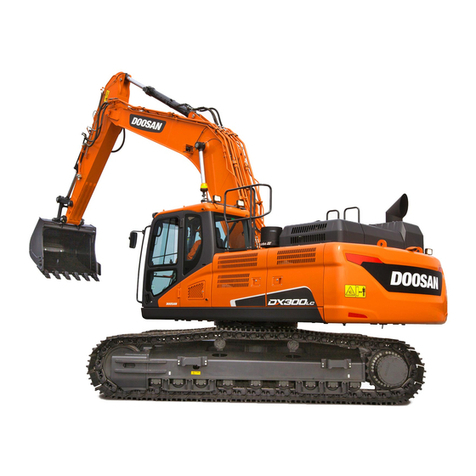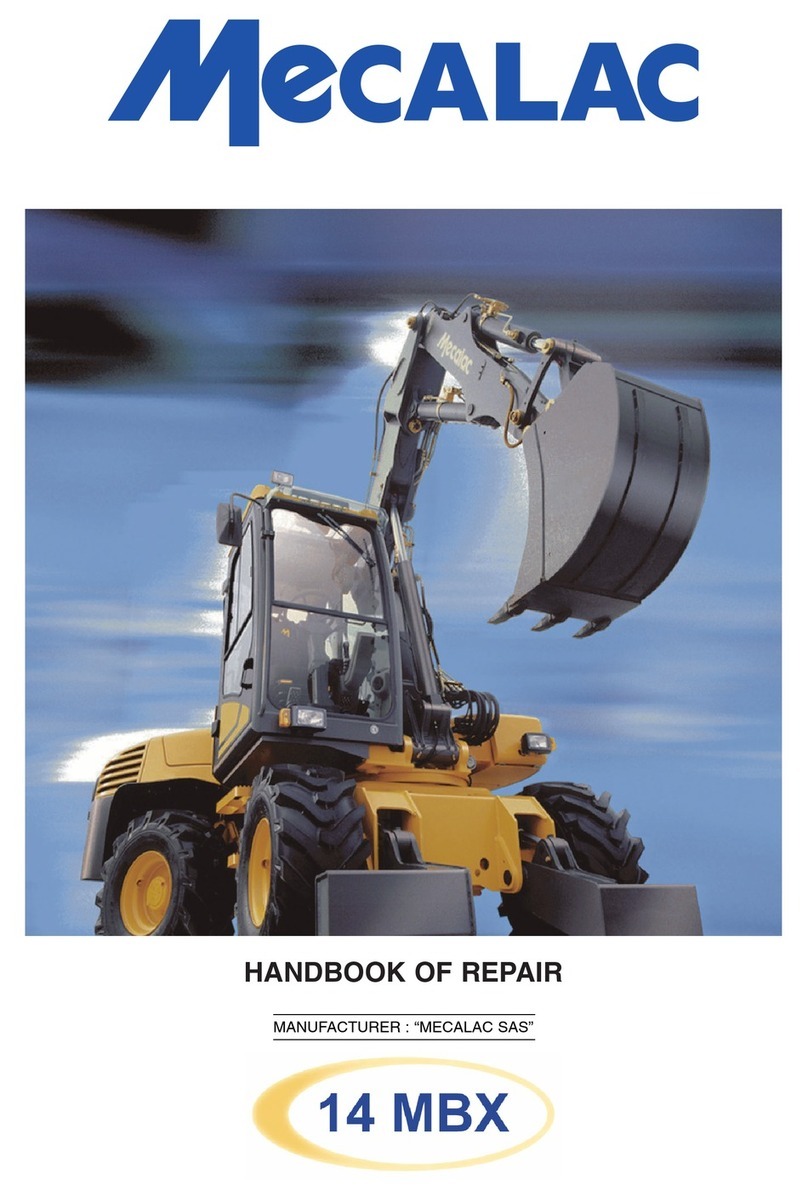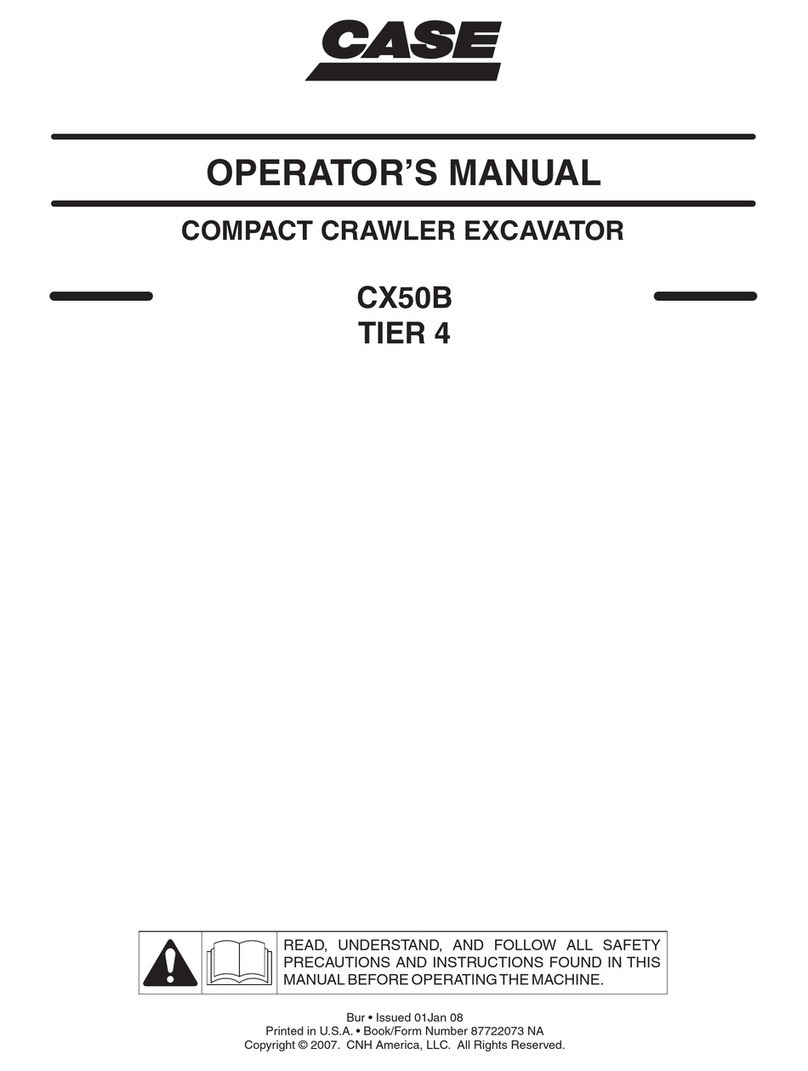
SAFETY INFORMATION FOREWORD
1–6
VIBRATION LEVELS
qWhen used for its intended purpose, levels of vibration for the earth-moving machine transmitted from the
operator’s seat are lower than or equal to the tested vibrations for the relative machinery class in compliance
with ISO 7096
qFor PC210-10, PC210LC-10
qThe actual acceleration value for the hands and arms is less than or equal to 2.5 m/s², the uncertainty for this
value is 0.53 m/s² according to EN12096:1997.
qThe actual acceleration value for the body is less than or equal to 0.5 m/s², the uncertainty for this value is
0.28 m/s² according to EN12096:1997.
qThese values were determined using a representative machine and measured during the typical operating
condition indicated below according to the measurement procedures that are defined in the standards ISO
2631/1 and ISO 5349.
qOperating condition:
qExcavating (Digging-loading-rotating-unloading-rotating)
qGuide to Reduce Vibration Levels on Machine
qThe following guides can help an operator of this machine to reduce the whole body vibration levels:
qUse the correct equipment and attachments.
qMaintain the machine according to this manual
qTension of crawler (for crawler machines)
qBrake and steering systems
qControls, hydraulic system and linkages
qKeep the terrain where the machine is working and travelling in good condition
qRemove any large rocks or obstacles
qFill any ditches and holes
qSite manager should provide machine operators with machine and schedule time to maintain terrain condi-
tions
qUse a seat that meets ISO 7096 and keep the seat maintained and adjusted
qAdjust the seat and suspension for the weight and size of the operator
qWear seat belt
qInspect and maintain the seat suspension and adjustment mechanisms
qSteer, brake, accelerate, and move the attachment levers and pedals slowly so that the machine moves
smoothly
qAdjust the machine speed and travel path to minimize the vibration level
qWhen pushing with bucket or blade, avoid sudden loading; load gradually
qDrive around obstacles and rough terrain conditions
qSlow down when it is necessary to go over rough terrain
qMake the curve radius of travelling path as large as possible
qTravel at low speed when travelling around sharp curves
qMinimize vibrations for long work cycle or long distance travelling
qReduce speed to prevent bounce
qTransport machines long distances between worksites
qThe following guidelines can be effective to minimize risks of low back pain
qOperate the machine only when you are in good health.
qProvide breaks to reduce long periods of sitting in the same posture
qDo not jump down from the cab or machine
qDo not repeatedly handle and lift loads


